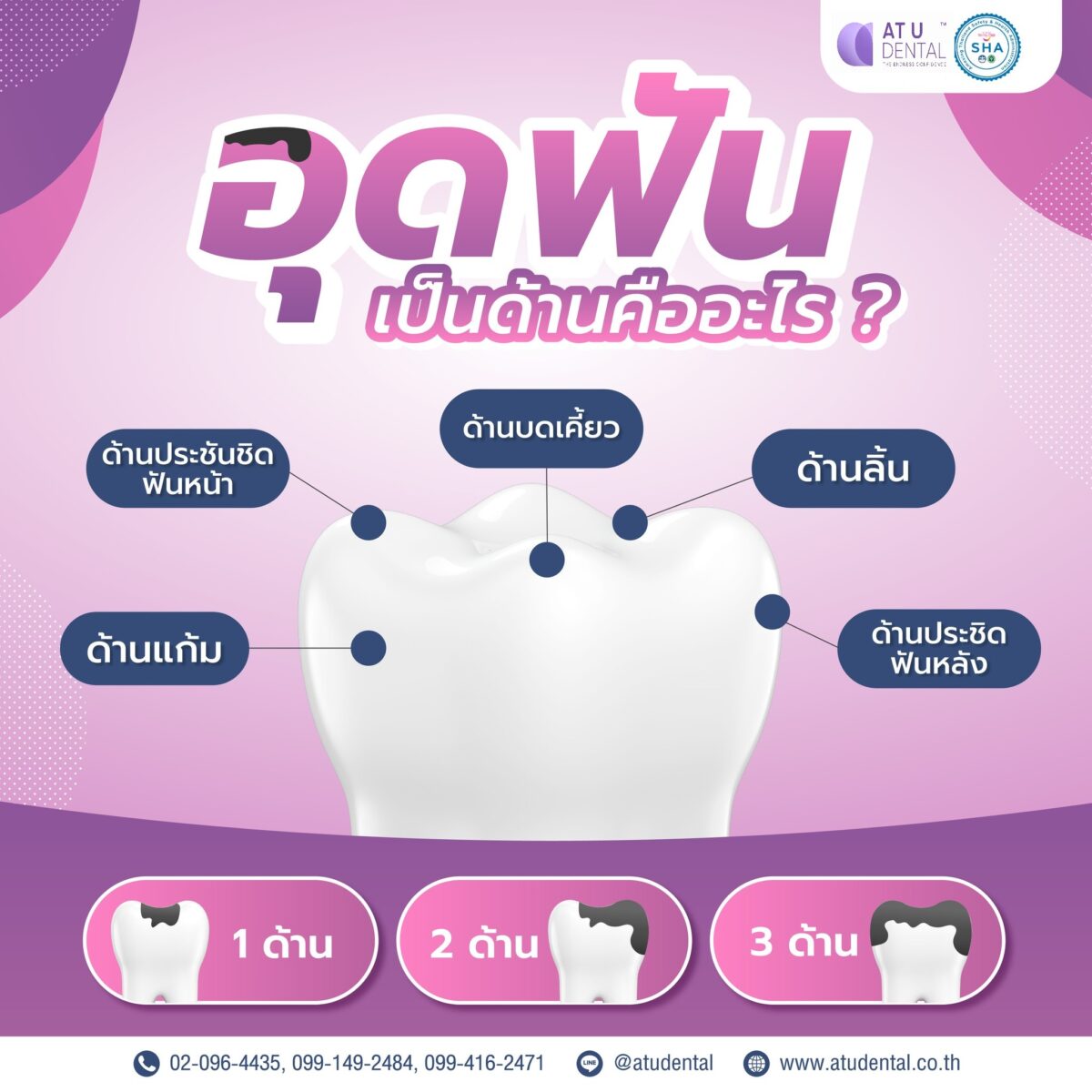Dental Clinic
คลินิคทันตกรรม
Restorative Dentistry: Dental Filling
Dental filling is a common restorative dentistry procedure that helps restore the structure of teeth that have been damaged due to decay or minor fractures. The primary goal of dental fillings is to prevent further deterioration and to restore the tooth’s function.
Dental fillings are suitable for individuals with early to moderate tooth decay, as well as minor enamel erosion. This procedure should be performed by an experienced dentist to ensure safety and long-lasting results.
Types of Dental Filling Materials
- Amalgam Filling
- Composed of metal alloys, including mercury, silver, and copper
- Strong and durable, making it suitable for molars that are used for chewing
- Composite Resin Filling
- Matches the natural color of teeth
- Ideal for front teeth and areas where aesthetics are a priority
- Glass Ionomer Filling
- Suitable for teeth that do not endure high chewing pressure, such as primary teeth or minor cavities
- Releases fluoride, helping to prevent further tooth decay
- Ceramic Filling
- Durable and closely resembles the natural color of teeth
- Ideal for those seeking both aesthetics and longevity

Tooth Surfaces That Can Be Filled
Each tooth has multiple surfaces that may develop cavities and require filling. The common filling locations include:
- Occlusal Surface
- The top surface of the tooth used for chewing Features deep grooves, making it highly susceptible to decay, particularly in molars
- Mesial Surface
- The side of the tooth facing the adjacent front tooth Filling in this area helps prevent cavities from spreading to neighboring teeth
- Distal Surface
- The side of the tooth facing the adjacent back tooth Prone to decay as it is more challenging to clean
- Buccal Surface
- The surface of the tooth facing the inner cheek Can experience wear from improper brushing techniques or acidic conditions in the mouth
- Lingual Surface
- The surface of the tooth facing the tongue Plaque accumulation in this area can lead to cavities
Types of Dental Fillings Based on the Number of Surfaces Filled
- Single-Surface Filling – Used for small cavities limited to one surface of the tooth
- Two-Surface Filling – Common in cases of decay between teeth, requiring fillings on both the contact surface and the chewing surface
- Three-Surface Filling – Applied when decay affects multiple areas, such as the chewing surface and both contact surfaces
Dental Filling Procedure
- Diagnosis and Treatment Planning
- The dentist examines the teeth and may take X-rays to assess the extent of the damage
- Tooth Preparation
- Cleaning the tooth and removing decayed or damaged portions
- Cavity Preparation
- The dentist shapes the cavity to accommodate the filling material
- Filling Placement
- The chosen filling material is placed and molded to fit the tooth structure
- Final Check and Polishing
- The dentist ensures proper bite alignment and polishes the filling for a smooth finish
Benefits of Dental Fillings
- Prevents further tooth decay
- Restores the structure and function of the tooth
- Reduces tooth sensitivity caused by decay or enamel wear
- Enhances the appearance of teeth when using tooth-colored filling materials
Post-Filling Care Instructions
- Avoid hard or sticky foods for the first 24 hours
- Maintain good oral hygiene by brushing and flossing regularly
- If you experience tooth sensitivity after filling, consult your dentist for possible adjustments
Frequently Asked Questions (FAQ)
Q: Does getting a dental filling hurt?
A: The dentist may use local anesthesia if necessary to ensure comfort during the procedure.
Q: How long does a dental filling procedure take?
A: Typically, the process takes around 20-60 minutes, depending on the size of the cavity.
Q: How long do different filling materials last?
A: Amalgam fillings can last 10-15 years, while composite fillings generally last 5-10 years, depending on oral care habits.
Q: How should I take care of my teeth after getting a filling?
A: Avoid chewing hard or sticky foods on the filled tooth for the first 24 hours and maintain regular oral hygiene.
Q: What dental issues can fillings help resolve?
A: Fillings help treat cavities, minor tooth fractures, and enamel erosion.
Dental fillings are an essential restorative procedure that helps restore both the function and structure of damaged teeth. Choosing the right filling material depends on the location of the cavity and the patient’s specific needs. Consulting an experienced dentist ensures the best and safest outcome.
References:
- The Dental Association of Thailand
- Ministry of Public Health’s Guidelines for Restorative Dentistry
- Restorative Dentistry: Clinical Applications and Techniques
- Expert insights from restorative dentistry specialists
Dental Treatment


